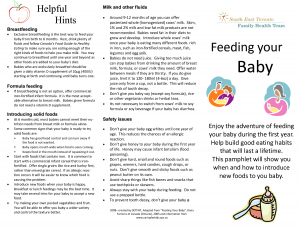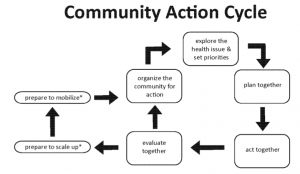While discussing pregnancy and birth, it only seems right to discuss infertility and our new technological ways of circumventing it. As science advances, so has birth, and infertility is no longer considered an untreatable problem. In vitro fertilization (IVF), the process of placing fertilized eggs within a woman’s uterus for implantation, and intrauterine insemination (IUI), inserting washed sperm into the uterus, better known as artificial insemination, are allowing women that previously could not bear children to do so. However, they are far from perfect.
(space)
The biggest barrier in IVT use is cost, ranging from $8,000 to $15,000, often not covered by insurance. Though it does not solve many of the problems IVT does, the average artificial insemination treatment is much less expensive at an average of $895, but still wildly more expensive than the typical manner of getting pregnant, and beyond what many couples are able to easilyafford. The constraint of price becomes even clearer with the caveat of success; these are prices per treatment, with no guaranteed success. With fertility treatments, IVF succeeds 45% of the time with mothers under 35 and IUI succeeds in a viable pregnancy 8-17% (also variable with maternal age.) The few insurances that do offer these procedures only pay for one treatment, so a positive outcome is a coin toss at best, for those that can afford it.
(space)
There are problems with the method itself as well. Anecdotally, having worked in the Emory Midtown NICU, the nurses told me every baby to stay there over 20 days was IVF, or at least most were, and scientifically, there is data to back this up; the freezing process used on IVF embryos results in hypomethylation, meaning genetically, there are fewer markers turning genes off, and leaving excessive genes active can lead to numerous problems, from autism to schizophrenia to higher cancer rates. Very few longitudinal studies have been conducted to discover how frequently or severely this presents, but any significant change in the DNA as such is worth noting.
(space)
Additionally, from fertility treatments come multiple fertilizations, and though the mother can choose to opt for having a one-child pregnancy, or keeping three or more, in the majority of cases mother’s choose to keep two. Twins, most often, are born pre-term, already more likely to have an extended stay in the NICU due to incomplete lung development, and suffer more frequent childhood illnesses and growth deficits. With mothers already in advanced maternal age, as is often the case, this pregnancy is especially difficult and is more commonly lost, in which case, the effort has all been for naught.
(space)
Clearly, we have a long way to go in these pregnancy methods, but despite this panoply of difficulties, since its 1978 conception there are now five million IVF babies (many adults) in the world today, a testament to its success. How would you improve access to these treatments, and/or delivery of them? If you or your partner were infertile, would you choose to use one of these methods? How can we better advocate for all mothers struggling to get pregnant?
(space)
Bolnick, J. M., Bolnick, A. D., Estill, M. S., & Diamond, M. P. (2014). Epigenetics: are babies healthier conceived through IUI compared with fresh or frozen IVF cycles? Fertility and Sterility, 102(3). 85.
Eden, A., Gaudet, F., Waghmare, A., & Jaenisch, R. (2003). Chromosomal instability and tumors promoted by DNA hypomethylation. Science, 300. 455.
Evans, J., Hannan, N. J., Edgell, T. A., Vollenhoven, B. J., Lutjen, P. J., Osianlis, T., Salamonsen, L. A., & Rombauts, L. J. F. (2014). Fresh versus frozen embryo transfer: backing clinical decisions with scientific and clinical evidence. Human Reproduction Update, 20(6). 808-21.


